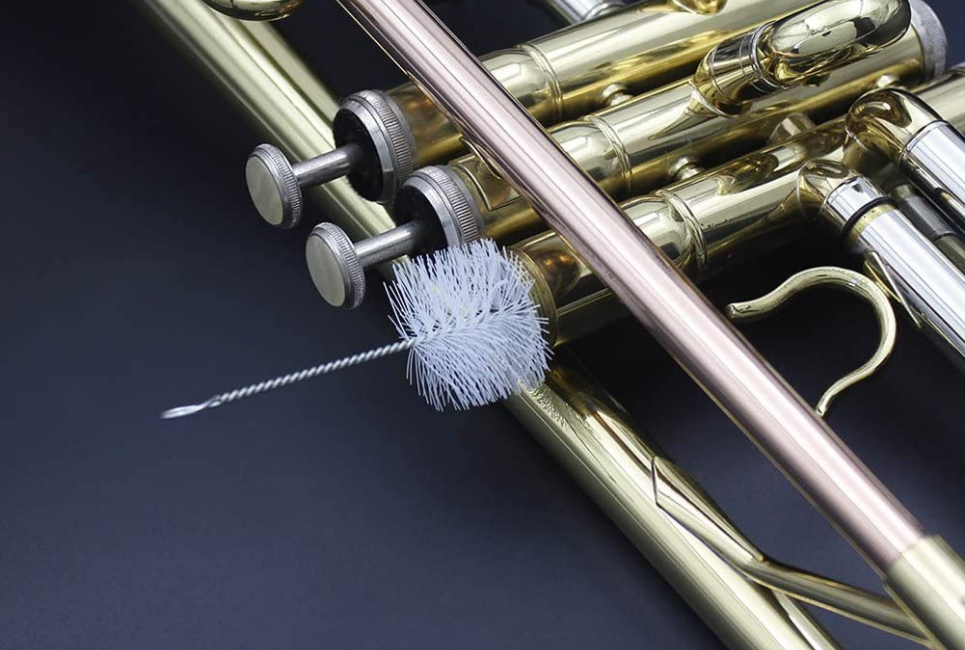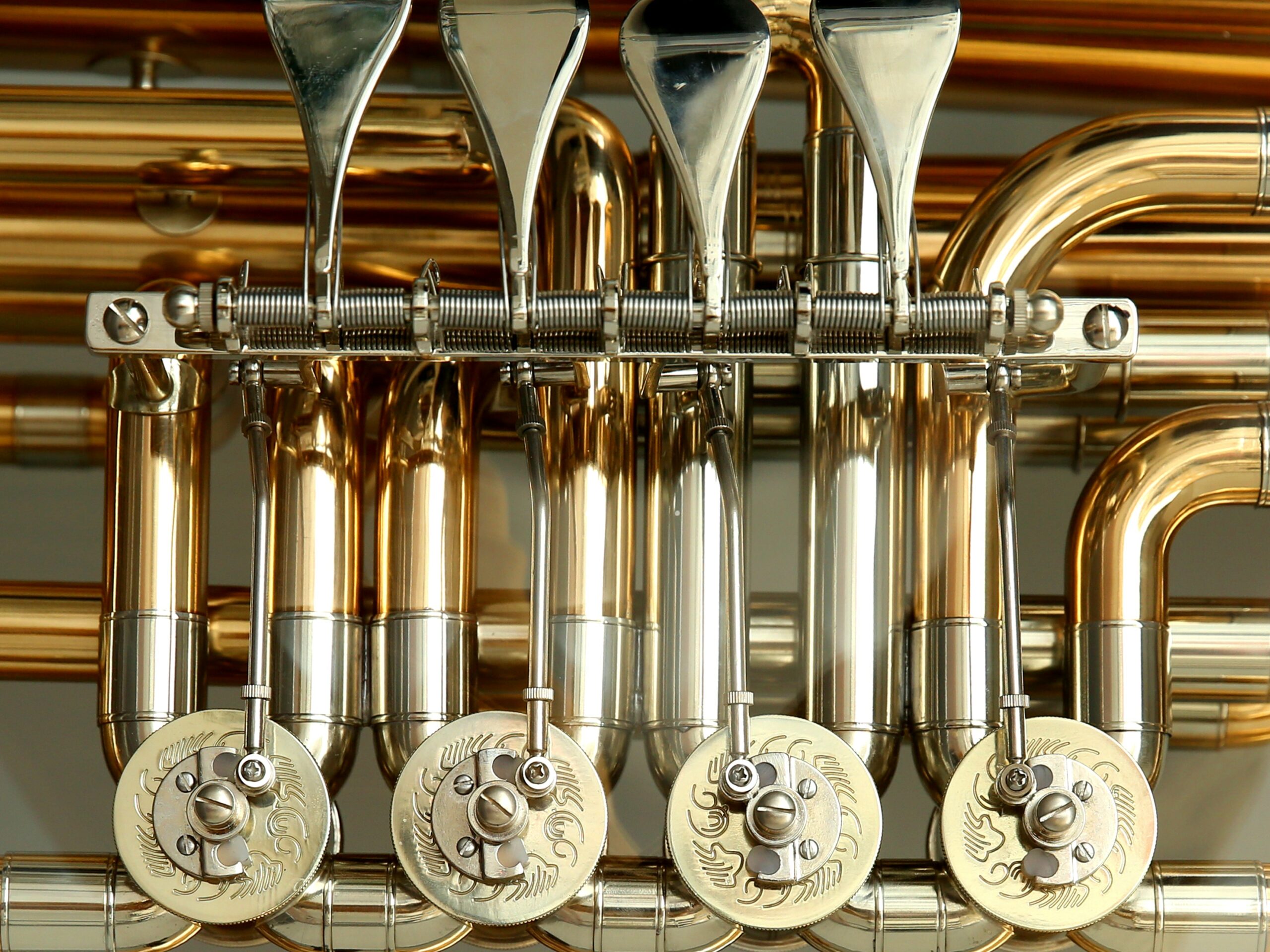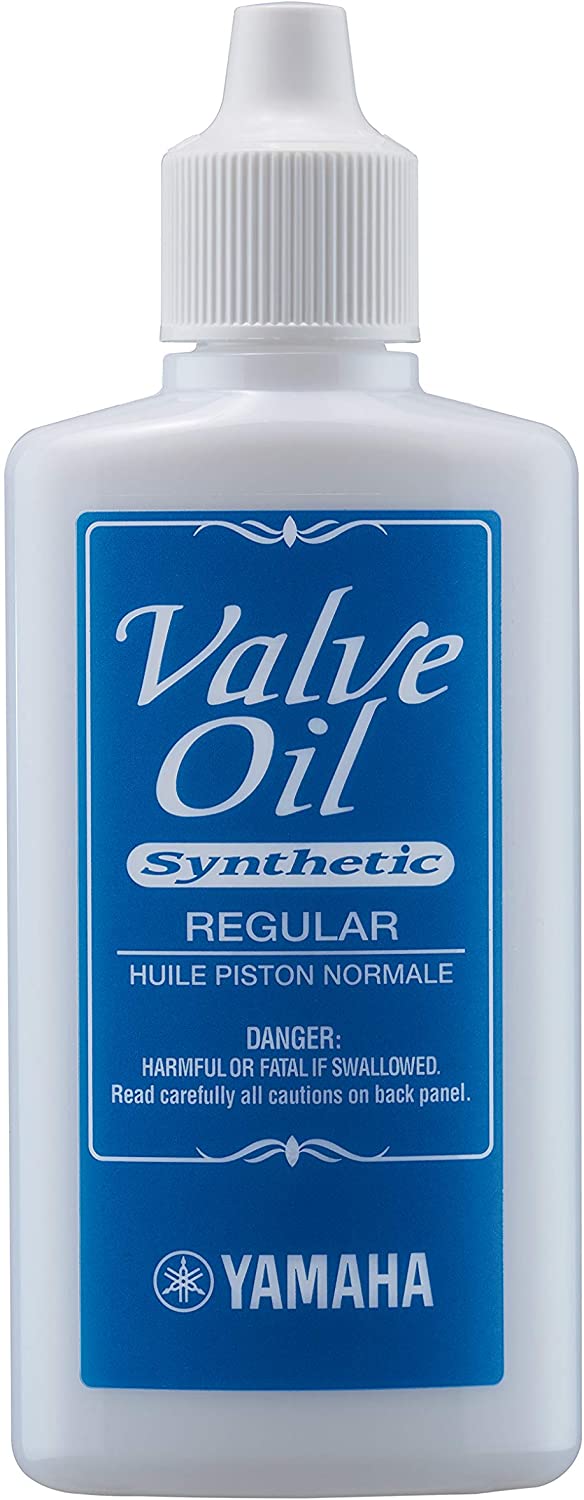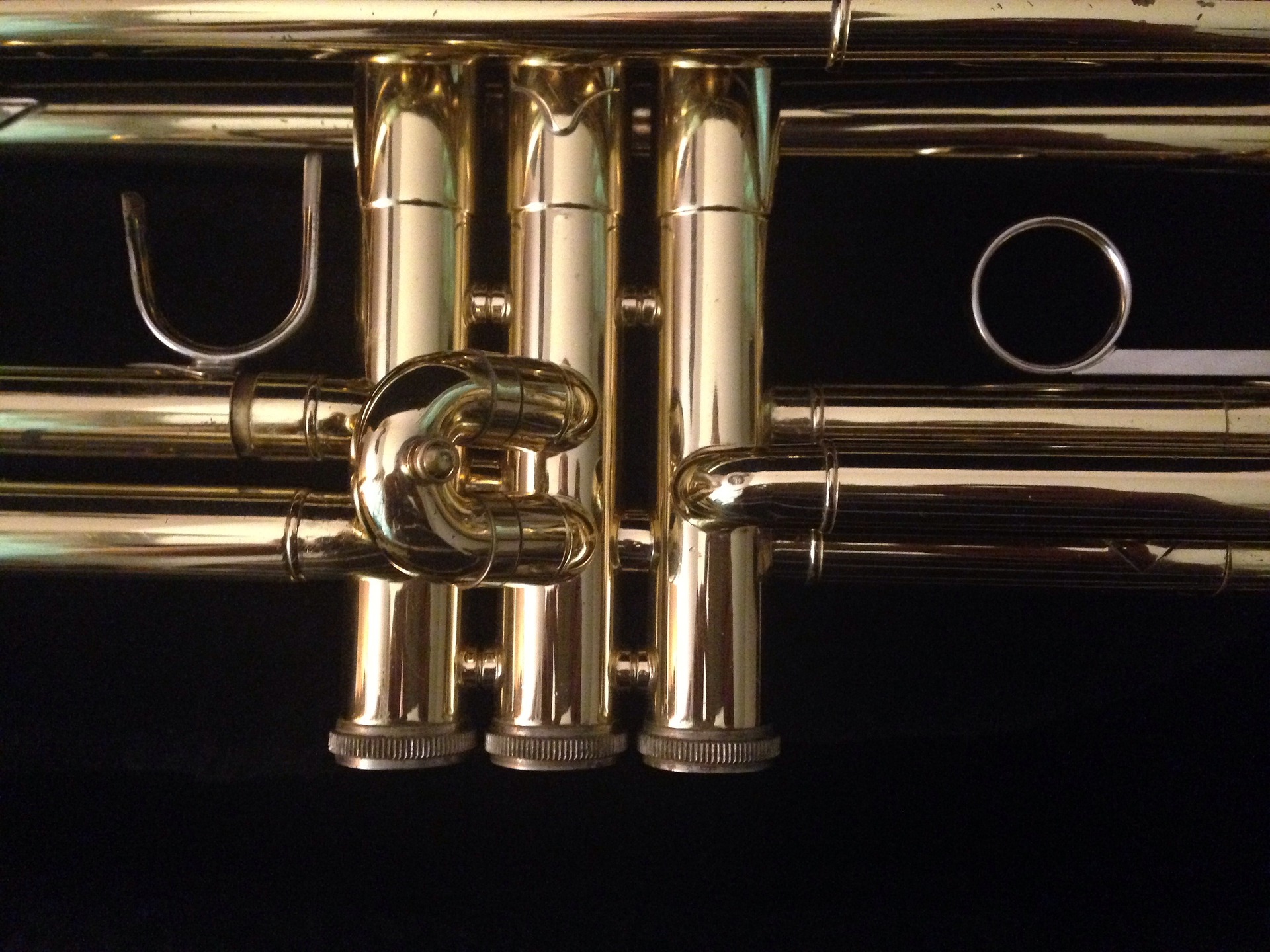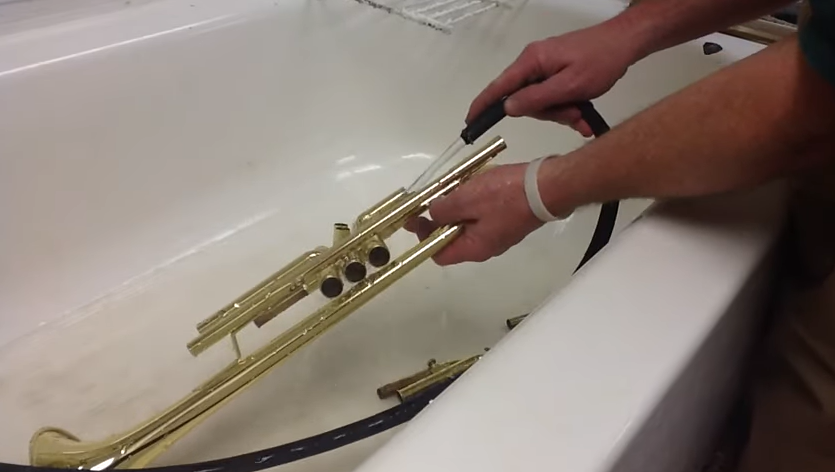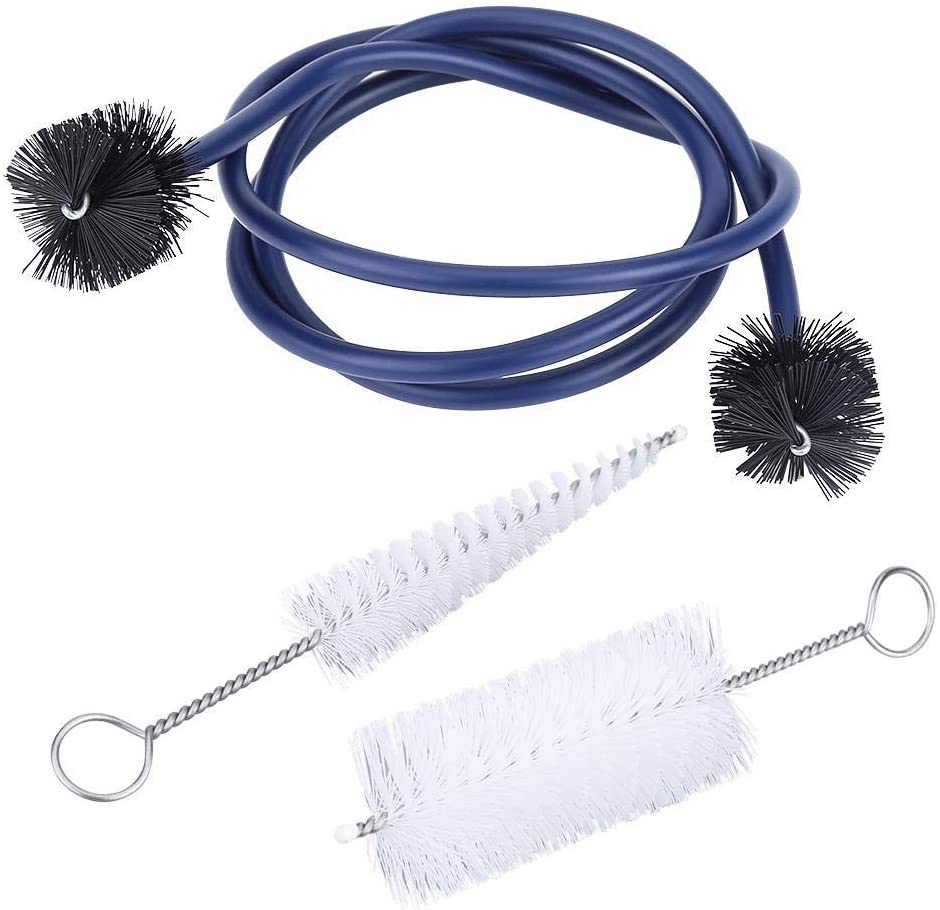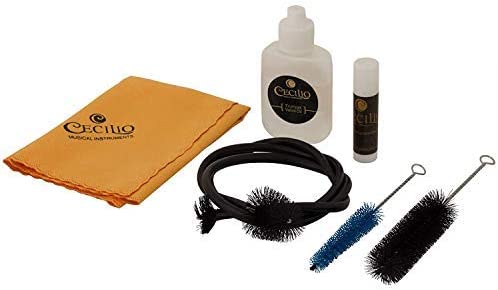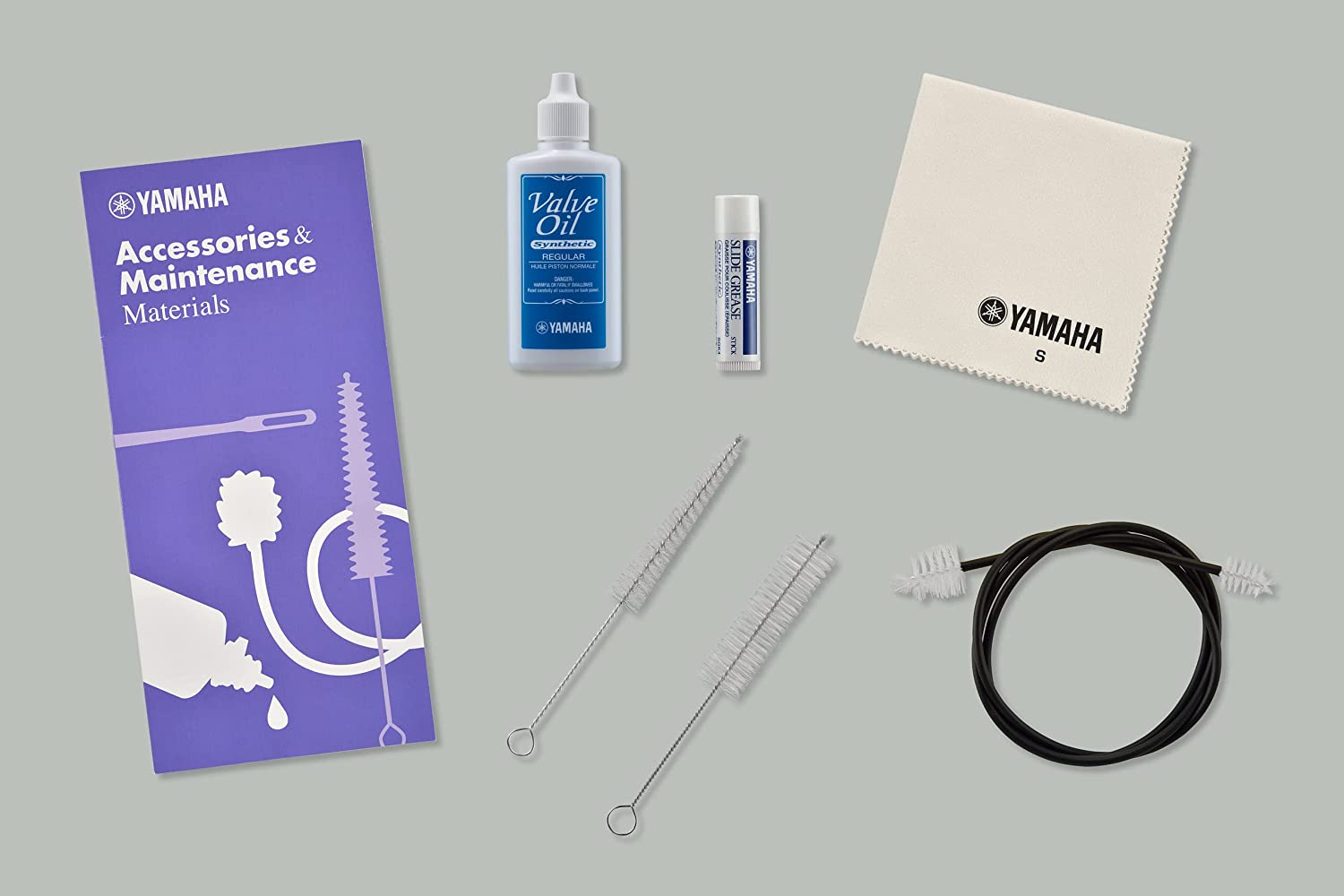- How to Clean Trumpets - May 31, 2022
- How to Find the Best 5 String Violas - May 31, 2022
- Cecilio CCO 200 Review and Guide - April 1, 2022
Sometimes when I tell somebody that I chose to learn the trumpet a few years back, they look at me with quite a shocked face. They tell me that they admire my dedication to the instrument, but that they’d much rather learn an instrument that is simpler to maintain like the violin, instead of spending time researching how to clean trumpets all day.
This always cracks me up – come on, cleaning trumpet is honestly not that difficult once you know what you are doing. It only takes a bit of initial research and some investment into some tools, and then you’ll find it easy or even pleasurable in the future!
Every instrument that you will come across will have its little quirks like this. With violins, you must learn how to maintain your strings by applying rosin. With guitars, you must learn how to quickly restring that peskily thin high-E string. With trumpets, you need to learn how to clean them, it’s not that big of a deal.
However, to make things as simple and smooth as possible for you, I’ve put together the following guide on how to clean trumpets. Read this once, memorize it, and I guarantee that it will save you a ton of hassle in the future. You’ll be making it look easy in no time!
Bottom Line Up Front:
Cleaning trumpets is a much simpler process than you might expect, but to do it properly, you will need three types of brushes, oil, grease, a polishing cloth, and some household cleaning items. An all-in-one kit such as the Cecilio or Yamaha maintenance kits listed in this guide will provide you with everything you need to get started, but tools can also be purchased separately.
Why You Should Learn to Clean Your Trumpet
Other than the classic case of people claiming they’d never want to learn the trumpet because cleaning it is too hard (it’s really not), the next pet peeve on my list is when trumpeters tell me that they don’t bother cleaning their trumpet! This is arguably even worse, and it seriously winds me up. Before we take a look at exactly how to clean trumpets, let’s have a look at why it is so important to do.
Health Reasons
The first thing to consider when ignoring your trumpet cleaning duties is the negative health effects that it can cause. You heard that right – cleaning your trumpet isn’t just about keeping it looking cool (more on that later), but it’s much more important – a dirty trumpet is prone to causing disease!
That may sound dramatic, but it’s true – every time you put your mouth to the mouthpiece of your trumpet and blow, you are exhaling thousands of tiny water droplets into the instrument, and these will contain bacteria from inside you. Imagine when you play the instrument days later – you’ll be inhaling the bacteria from the last session, gross!
This may all sound dramatic, but it’s serious business. The mold and bacteria that forms in your trumpet when it’s not cleaned regularly can cause a respiratory disease called HP (Hypersensitivity Pneumonitis) that can cause a cough, a fever, and even difficulty breathing. Leaving this untreated can even result in fibrosis of the lungs, and trust me – that is not going to be pretty.
Don’t panic though – all of these gross details may be putting you off your favorite brass instrument, but they can all be completely avoided with one simple habit, and that is cleaning your trumpet! If you want to be extra safe, you can even take additional precautionary steps such as brushing your teeth and mouth washing before sessions to limit the number of bacteria that is entering your instrument. This way, not only will you be practicing a cool instrument, but you’ll be practicing excellent dental hygiene too!
Protecting the Instrument
So, you think you’re invisible and you’re not scared of HP – what’s the worst that could go wrong? Well, that attitude is not only extremely stupid, but it’s also highly misinformed, as your body is not the only thing that will suffer from an unclean trumpet. You may be quick to be careless about your health, but I bet that you’ll think twice if I tell you that not cleaning your trumpet regularly can damage the exact thing that you spent months saving up for!
That’s right – not cleaning your trumpet regularly can damage it badly, both inside and out. For starters, if you’re not cleaning the outside of the instrument effectively, oil from your hands and stray water molecules can result in the brass that your instrument is made from tarnishing. This will result in stains or even rust in the long term, and it’s going to look mighty unpleasant.
However, you’ve got a lot more to worry about than an unpleasant exterior aesthetic – as we discussed earlier, bacteria and mold on the inside of the instrument are serious side effects of not cleaning your trumpet, and this isn’t only going to affect your lungs, but it can massively reduce the quality of the tunes that come out of your instrument. The worst-case scenario here is that the trumpet can damage your trumpet tubes so badly that they need replacing, and depending on your trumpet, this could cost an arm and a leg!
Once again, all this is easily avoided – simply clean your trumpet regularly, and you’re going to have nothing to worry about. Simple.
Keeping It Shiny
The last reason that I would highly recommend you keep your trumpet clean is simple – it’ll keep it looking great. I will always remember the moment that I took an interest in trumpets as a child, seeing the reflective brass reflecting in the sun during an outdoor parade – it was stunning. I didn’t realize that this required cleaning to maintain, so when I bought my first trumpet, I was upset to see that over time, it was losing its shine. Needless to say, once my music teacher pointed out that it needed an exterior clean and not just my usual interior clean, it was restored to its former glory.
It might sound like an obvious thing to state, but you should always take pride in your belongings and keep them in tip-top shape. You wouldn’t spend money on a beautiful house only to trash it, or save up for a new car to leave it unwashed for months at a time. So, why on earth would you put your poor trumpet through that? They’re expensive instruments and they look super cool when clean, and it hardly takes any time to get the job done – just do it!
How To Clean Trumpets – My Step by Step Guide
If those reasons for cleaning your trumpet didn’t convince you then I don’t know what will – you are obviously not sane, as the risks of catching a disease or trashing your instrument simply are not worth it. However, if you’re now ready to make a change and start cleaning your trumpet, you’re in the right place – I’m about to walk you through exactly how to do it, step by step.
What You’ll Need
Before you get started, let’s take a quick moment to discuss the inventory that you are going to need. After all, it shouldn’t shock you to know that you can’t just clean your trumpet with a rag and some hand sanitizer!
First, you’re going to need a maintenance kit. As the name suggests, this isn’t so much about keeping the trumpet clean but maintaining it. Having one of these bad boys will keep all the tubes in good condition and lubricated, facilitating an excellent trumpet-playing experience. Standard trumpet maintenance kits should include:
- Valve Oil
- Slide Grease
- Polishing Cloth
- Mouthpiece Brush
- Valve Casing Brush
- Flexible Brush
If you already own one or some of these tools, don’t worry – you can buy the rest separately. However, I’d still personally recommend grabbing a spare maintenance kit, because if you’re anything like me, I’m always misplacing my cleaning brushes! Once you’ve ensured you’ve got these specialized tools, there are a few more things that you’re going to need, but luckily they are easier to find around the house. You’re going to need to grab:
- Dish soap
- A bucket, sink, or any other large container
- Soft and clean rags
- Polish
- Rubber Gloves
It may seem like a lot of items to tick off your list, but once you’ve got the maintenance kit purchases, the rest should be pretty easy to find. Now, let’s get started with the cleaning!
Step 1: Cleaning the Valves
Now that you’ve got everything ready, the first thing you are going to want to do is to dismantle your trumpet. Rest your trumpet on a soft and clean rag or towel, and start to unscrew the valve caps at the top of each valve. Make sure you don’t get your valves mixed up as you remove them, it’s a classic error that I made a ton of times – they’re all numbered, so that should help. Put them on the cloth, and carefully wipe away any excess oil with a rag.
Step 2: Cleaning the Slides
You’re now going to want to remove all of the slides of your trumpet. The first and second slides (the ones closest to you) should slip right off, but the third slide may have a locking mechanism that you will have to unscrew before you can remove it. The fourth slide should slip right off though. Once you’ve removed all four slides, do the same as you did with the valves and rub away any excess oil with a clean rag. Never put these slides back onto the trumpet when the grease has been removed, as this could damage your trumpet.
Step 3: Preparing to Bathe Your Trumpet
This next step can be a little bit scary if you’ve never done it before – it’s time to bathe your trumpet. That’s right, just like us, trumpets love a good soak in some warm water to get their deep clean on! It isn’t necessary to do this every time your clean your trumpet, as it is more of a deep clean process. However, if you haven’t cleaned it for a while and it’s looking pretty dirty, it’s worth doing.
Simply fill a large container such as a bucket or sink with warm water, making sure it is not hot, as this can damage the brass. You should also place a towel at the bottom of the container and submerge it in the water to provide soft protection for your trumpet, as it could get scratched on the container. Add a little bit of dish soap, mix it up, and you’re ready to bathe your trumpet!
Step 4: Bathing your Trumpet
You can start bathing your trumpet at the valves but be very careful to not submerge the entire valve, as this would soak the felt and springs. If felts or springs get wet, they can expand or contract, and this will mess up the intonation of your trumpet. However, you can feel free to go to town with the body of your trumpet and the slides – they should be fully submerged and soaked in soapy warm water.
Step 5: Using the Brushes
Once everything has soaked for a while, use your flexible brush to clean out all of the slides and tubes of your trumpet. You can also use this to clean the ports of your valves, but just remember about keeping the springs and felts dry! It’s also worth checking your flexible brush for a metal spike at the top – some cheap brands feature this, and it can potentially scratch your trumpet, so be careful.
You will now need to switch to a more specialized brush, the Valve Casing Brush, to clean… you’ve guessed it, your valve casings! Watch out for that spike once again as scratches could result in a leak in your valve! Once you are satisfied that you have cleaned each part of your trumpet, ensure that you rinse them off to remove any soapy residue, and leave them to dry off on a dry towel.
Step 6: Reapplying Oil and Grease
Once everything is dry, it’s time to regrease the slides and reoil the valves! Get your rubber gloves on and apply a small amount of grease to each slide. Once the grease is suitably applied, pop the slides back on one by one, sliding and twisting them to ensure the grease is evenly spread. Once the slides are back in their original place, screw the bottom valve caps back onto the trumpet. Make one final check that you wiped all excess oil off the valves, ensure you have them in the correct order, and apply a few drops of valve oil onto each side of each valve and replace it carefully. Gently adjust the valve guide until you hear a click, replace the top caps, and you’re just about done!
Step 7: General Maintenance
That’s just about everything you need to know about cleaning your trumpet, but there are just a couple of general maintenance pointers I’d like to go over. Whenever you have finished a session and are ready to put your trumpet away, always press the water keys and blow through the horn to get rid of any excess water inside – this will greatly reduce the amount of cleaning work you will be faced with. Give the exterior of the trumpet some care with a polish cloth, wash out the mouthpiece with your mouthpiece brush and soapy warm water, and you are good to move on with your day. Trust me – following these quick steps will save your hours of deep cleaning in the future!
My Top 3 Recommendations for Trumpet Maintenance Kits
I sure hope that this step-by-step guide to trumpet cleaning helps you – I made sure to be as thorough as possible, so I’m sure it did. In case you’re fretting about any tools listed that you may not have, I’ve decided to list a few of the best trumpet maintenance kits that I have come across. Everything else should be easily findable around the house!
VGEBY1 Trumpet Cleaning Kit
The first maintenance kit on my list is only suitable for intermediate trumpeters who already have grease, oil, and other tools, but simply need some replacement brushes. That’s right, this budget kit simply comes with a flexible brush, a valve brush, and a mouthpiece brush. I bought this recently after noticing some signs of aging on my original brushes, and I was very happy with the quality. They even come with little plastic protection cases over the tips to prevent any spikes from scratching your trumpet – brilliant.
Pros
- Cheap yet great quality
- Ideal for replacing old brushes
- Comes with every brush you could need
Cons
- Doesn’t come with everything a beginner needs to clean trumpets, just the brushes
Cecilio Trumpet Cleaning Maintenance Care Kit
Next on my list is the Cecilio Trumpet Cleaning Maintenace Care Kit, and this time, everything is included. I’ve always been a big fan of Cecilio products for my violin, viola, and cello, but I’d never previously bought Cecilio products for my trumpet. I wasn’t disappointed when I purchased this kit years back – it came with all three brushes, grease, oil, and a beautifully branded yellow Cecilio polish cloth. It’s a perfect little kit that contains everything you need for trumpet maintenance – that is except for the household items and the kitchen sink, of course!
Pros
- Comes with all three brushes
- Contains bottles of grease and oil
- Includes a great Cecilio polish cloth
- Cecilio is a fantastic music brand with a great reputation
Cons
- If you’re just looking to replace a brush or two, this whole bundle might be unnecessary (although you can never have too many spares!)
Yamaha Trumpet/Cornet Maintenance Kit
The final trumpet maintenance kit I wanted to recommend is made by Yamaha, and I honestly don’t have too much to say about this kit, other than that it is fantastic. The contents of it are identical to the previously mentioned Cecilio kit, although branded by Yamaha of course. There aren’t many music brands with better reputations than Yamaha, so this might be preferable to intermediate players over the beginner associations of Cecilio. It also only costs a few dollars more, so as long as you’re not scraping your last few cents together to get a kit, I’d recommend this over the Cecilio. It’s a close call though!
Pros
- Yamaha has a flawless reputation for high-quality music products
Contains three brushes, bottles of oil and grease, and a Yamaha polish cloth
Excellent value for money
Only slightly more expensive than the Cecilio kit, and the quality is notably higher
Cons
- If you’re tight on cash, spending the extra few dollars on this over the Cecilio kit might be unnecessary.
FAQ
Before we finish things up, let’s round everything we’ve learned off with a quick FAQ. If you’ve got any remaining burning questions, hopefully, they are answered in this quick summary!
Answer: You should conduct general maintenance and cleaning after every trumpet session if possible, as this will mean you will only have to conduct a deep soak every week or two.
Answer: To clean a trumpet, you will need a flexible brush, brushes for the valves and mouthpiece, a polish cloth, oil, grease, and some general household cleaning items such as towels, a large container, and disk soap.
Answer: Trumpet grease is exclusive to be used on sliders, whereas oil must be used on the valves.
Final Thoughts
Well, that’s just about everything you could ever need to know about cleaning trumpets! From the reasons why you should regularly clean your trumpet to my step-by-step guide and maintenance kit recommendations, I challenge you to find a more comprehensive guide to the matter than this!
Grab yourself a maintenance kit such as the Yamaha or Cecilio options listed in my recommendations, and keep on top of the small cleaning jobs so that they don’t build up – trust me, it’s going to be worth the time and financial investment in the future. Good luck!
Looking for more interesting readings? Check out:

